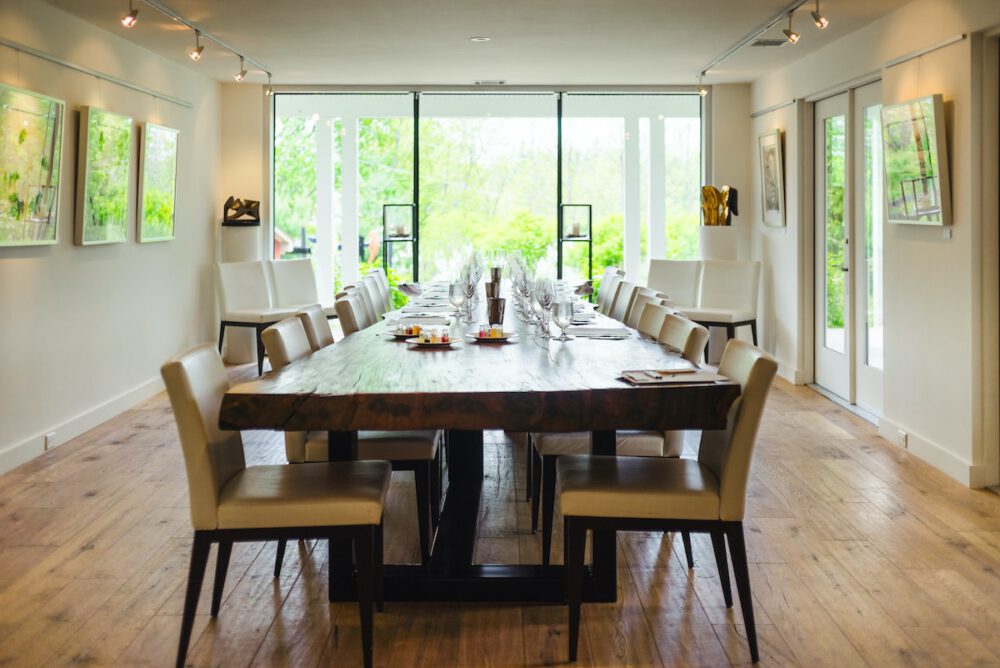Quick Contact!
For the fastest reply, call us at (678) 635-5429.
Mailing Address
1113 Ivey Brook Drive
Bethlehem, GA 30620
Monday – Friday: 8 am – 4 pm
Saturday & Sunday: Closed
Quick Contact!
For the fastest reply, call us at (678) 635-5429.

You’ve probably seen one and wondered what it was. So what is a live edge dining table? How is it made? Why are you seeing them everywhere? And are they actually that cool? Do not fret; we have actually gotten the answer for you! Live edge designs have been around since guy began developing furniture (are we enabled to say “literally” here?) …
What is a Live Edge Table? “Live edge” describes a procedure of using wood, normally in furnishings or shelving, where at least one side is left unblemished or natural.
How Is It Made? Live edge wood comes from trees (paging Captain Obvious), and is cut in the very same precise method as “basic” wood, with one significant exception, one edge is left natural so the original appearance of the tree remains. This cuts down on wood waste because the boards aren’t planed a second time to cut off the edges to make them square.
If it’s not evident, live edge items are generally considered more ecologically friendly due to the fact that more (if not all) of the wood is actually used. In a sense, each tree goes even further. In addition, it’s extremely typical for live edge furniture to be crafted from a felled tree or tree branch, or other reclaimed sources.
Typically, a live edge is offered with either the bark on or off. Leaving the bark on ways complete on natural – totally untouched by manly tools. We’re talking cool, gnarly, bark exposed. Sort of like this: There are advantages and disadvantages to this style of live edge (live edge dining table). Undoubtedly, it’s quite rough – you do not wish to bump your shins on that! And if it’s not evident, every table needs to be handmade from start to complete to maintain the natural shape and leave the bark unharmed.
They bring a natural component into your area that can’t be matched by other materials – live edge dining table. Additionally, because of the skill and craftsmanship needed, they’re extremely unusual! Even Paul Bunyan and Babe are pleased by live edge furnishings. The bark can also be removed, which is the more typical variation of a live edge.
In this case, an experienced carpenter eliminates the bark with a drawknife, and after that a spokeshave. This is generally done by hand with the objective of retaining the natural curves and contours in the wood. From there the edge is sanded with 120 and 180 grit sandpaper, usually with the rest of the table.
Typically, the bark-on live edge gets a few additional coats of shellac to guarantee the bark itself is effectively sealed, and will not break or split off in the future. Is Live Edge Expensive? The primary element that determines cost on a live edge table is how the top is made. A strong piece top (one piece of wood) needs to come from a single, large tree.
Certainly, rarity is a factor here. A basic dining table is 36-40″ long.If you envision the tree that’s 40″ wide, and tall and straight enough from which to cut a big, flat top, and you can begin to see why solid piece tops are challenging to come by, much less produce en masse. The additional expense also starts to make more sense.
Due to their size, they don’t fit into the majority of planers (the makers that make wood flat), so a strong slab top has to be hand-planed and then sanded down with a drum sander. Both of these procedures are energy and time intensive! A notable exception here is wall shelves, mantles, and console tables.
Obviously, there’s a huge range depending upon table size, but a basic solid slab live edge dining table is typically between $4,000 and $12,000. The more economical alternative to the solid slab is a tabletop built from several joined pieces of wood with live edge pieces on each side of the piece.
So, in lots of methods, a live edge table is really comparable to a standard wood table. The noteworthy exception is that the outermost wooden slabs are likewise the outer parts of a tree, and they have to be hand ended up before being signed up with to their typical lumber brethren! Normally, you can find a live edge dining table beginning around $2,500 approximately $6,000.
Live edge furnishings were originally popular in mid-Century contemporary houses, most significantly by architect George Nakashima, who crafted a series for Knoll in 1946. Like many designers and architects of his age, Nakashima was a strong supporter of integrating natural, organic components into his styles.
Many believe Fallingwater, for example, and you can understand why Nakashima deliberately chose wood that was imperfect – burrs, knots, you call it – and after that tied the beauty of nature, defects and all, into his designs.
Are you ready to renovate your space and bring more beauty into your home? Request a quote today.
Georgia’s Home Renovation & Remodeling Specialists